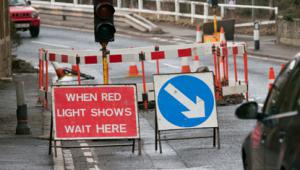05 November 2004
Scottish councils have been urged to give greater priority to a £1.7bn backlog of road repairs that has built up over the past ten years.
In a report published this week, Audit Scotland discloses that about 13% of the roads network (7,000 kilometres) is in need of repair.
The spending watchdog is particularly critical of local authorities. 'Scottish Executive spending on trunk roads has increased in line with traffic growth but council spend on maintaining local roads has not,' the report says.
It shows that in four council areas – East Renfrewshire, the City of Edinburgh, Inverclyde and Stirling – more than 20% of roads have deteriorated to a point where repairs are urgently needed.
It recommends that if councils are to manage their roads properly they need better IT systems and better information on the condition of the assets they are managing, not just roads, but footways, bridges, lighting, safety barriers, drainage and other assets that are associated with the network.
Audit Scotland suggests that many councils could improve value for money by entering into partnerships to make better use of specialist staff and equipment.
The report follows a study of the management of Scotland's 55,000 kilometres of public roads. It points out that the cost of bringing roads up to an acceptable standard is £1.5bn for council-maintained roads and £232m for motorways and trunk roads, which are maintained by the companies BEAR and Amey for the Scottish Executive.
Alastair MacNish, chair of the Accounts Commission, which is responsible for the audit of local authorities, said councils had not spent enough on structural repairs and, as a result, there was now a substantial backlog.
He said: 'Councils need to take action to bring their roads up to standard but there are no quick fixes to this problem – they need to develop long-term solutions to clear the backlog and continue to invest in structural repairs.'
PFnov2004


















